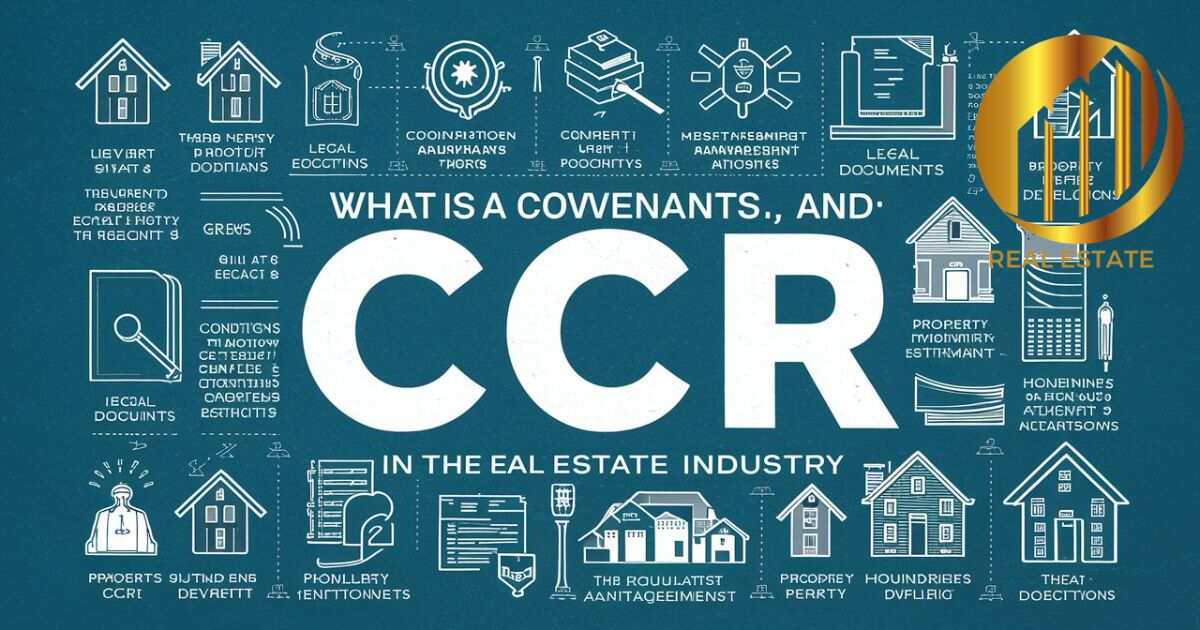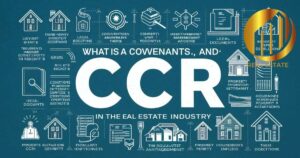A CCR (Conditions, Pledges, and Limitations) in land characterizes rules overseeing property utilization and upkeep inside a local area, upheld by a mortgage holders’ relationship to safeguard property estimations and maintain norms.
With CCRs Real Estate enter a domain of unmatched real estate knowledge. The question arises what is a CCR in the real estate industry? Experience the art of real estate investing as it has been revolutionized by our innovative solutions. Allow our experts to assist you with real estate potential maximization. Explore a world where every choice you make about your investments is a work of art in the making.
To preserve the standards, aesthetics, and general well-being of a neighborhood or housing complex CCRs are essential. They address a wide range of subjects to guarantee a peaceful living environment and safeguard property values including architectural criteria, landscaping specifications, noise limitations, pet laws, parking regulations, and more. This article explains several facets of CCR in the real estate sector.
What are Some Common CCRs in Real Estate?
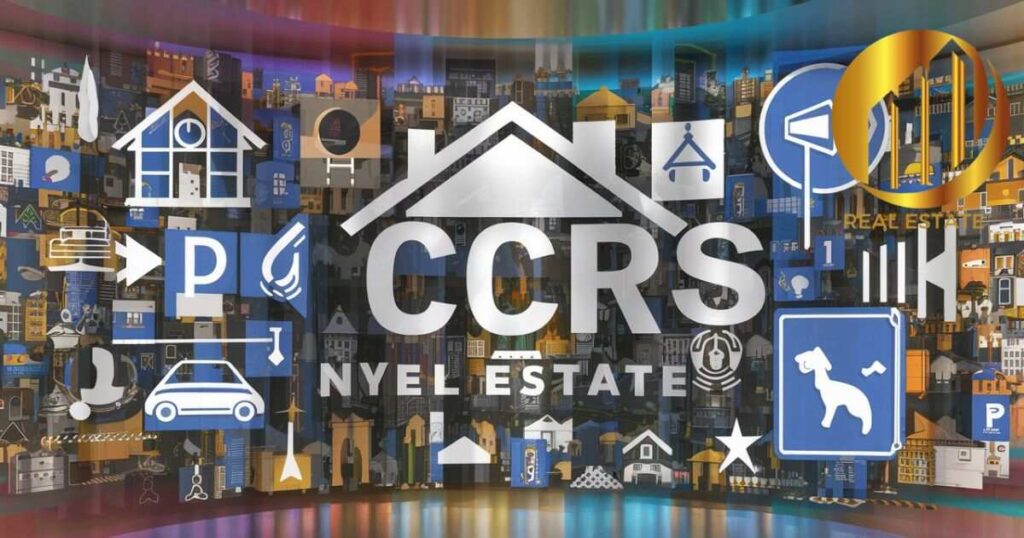
| Step | Common CCRs in Real Estate |
| 1 | Building Guidelines |
| 2 | Land Use Restrictions |
| 3 | Maintenance Requirements |
| 4 | Noise Limit |
| 5 | Pet Regulations |
Land Use Restrictions: CCRs typically specify areas for permitted uses, including any restrictions on commercial activity and zoning that include only residential or mixed-use areas
Maintenance requirements: Homeowners are required to keep their property and surrounding areas in good repair. Which may include common areas, walkways, and landscaping.
Noise Limits: CCRs often include noise level regulations to keep occupants quiet. Examples of such rules include prohibitions on loud parties, construction noise, and outdoor equipment.
Pet Regulations: These can include restrictions on the number, size, or breed of animals allowed as well as litter and leash guidelines.
How do CCRs Affect Property Value?
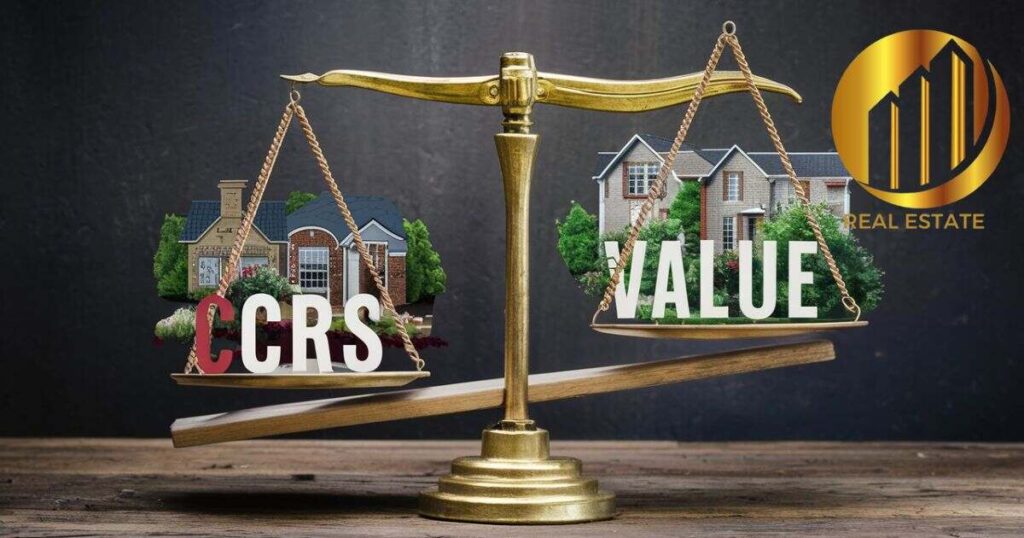
CCRs control how a property is used, maintained, and restricted, which has a substantial impact on its value. Properties that comply usually hold or increase in value. They provide restrictions on property use, landscaping, and architectural requirements, all of which improve the desirability of a property.
Communities are made aesthetically pleasing by maintenance duties. Buyers must ensure that their goals are in line with community standards and property prices. Because breaking CCRs can result in fines or legal action, buyers and property owners must comply.
What is the Purpose of CCRs in Real Estate?
In real estate CCRs help to safeguard, maintain, and raise property values within a neighborhood. Developers or homeowner organizations draft these contracts to preserve norms, aesthetics, and the general level of living within a community or residential complex.
By characterizing limits for property utilizes, building principles, arranging necessities, clamor limitations, pet disallowances, stopping guidelines, and so on. They maintain order in the local Property Directors safeguard the local area and give a feeling that the local area, follows the CCR. And draw in expected occupants or purchasers to the property. Respect for the CCR is key to protecting property values. It ensures the neighborhood is an attractive place to live for everyone.
What is the Process for Creating CCRs in Real Estate?
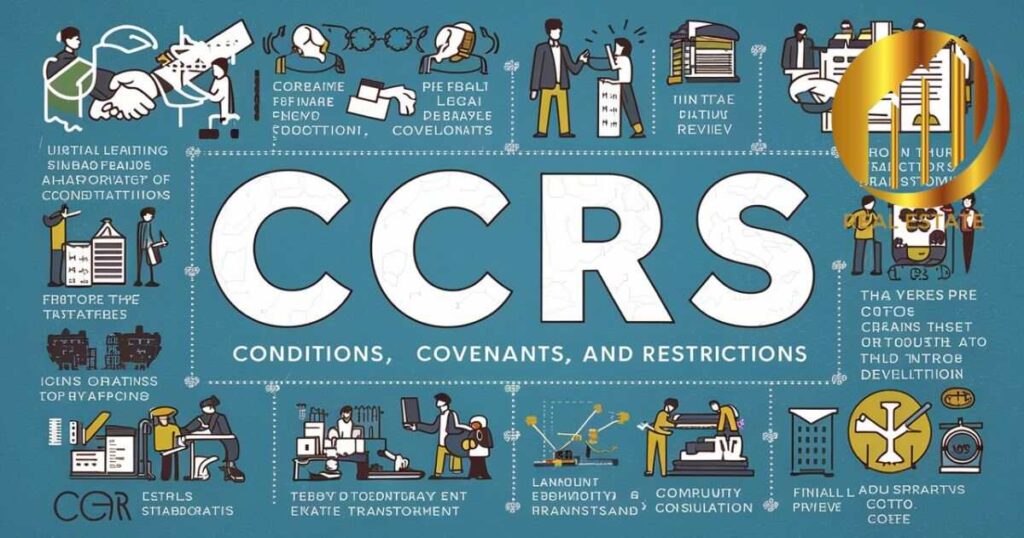
Developers and homeowner associations create legal agreements to regulate property usage, upkeep, and limits when creating CCRs (Conditions, Covenants, and limits) in real estate. To preserve community standards and aesthetics this procedure involves defining guidelines for things like landscaping, noise limits, and architectural requirements.
Preserving property values and guaranteeing a peaceful residential atmosphere are the objectives. Within these communities, property owners consent to abide by certain rules. Penalties or legal action may follow a violation. Careful consideration of community values and needs is required in the development of CCRs to preserve property values, promote sustainable and enjoyable living conditions, and address the intricacies of grandfathered real estate to ensure the harmonious integration of existing structures with evolving community standards.
How do CCRs Differ from Zoning Laws?
There are some important distinctions between zoning regulations and CCRs (Conditions, Covenants, and Restrictions). Government controls known as “zoning laws” restrict how real estate is used and developed in specific areas. CCRs are private rules that are usually made for certain communities or housing projects by developer associations or homeowner groups.
While they are legally binding agreements that only affect property owners inside a specific community or development, zoning regulations are enforced by governmental entities and apply to all properties within a designated area. Furthermore, breaking zoning regulations might have legal repercussions that are enforced by the government, whereas breaking CCRs usually is handled by homeowner associations or ordinary citizens in the neighborhood.
How are CCRs Enforced in Real Estate?
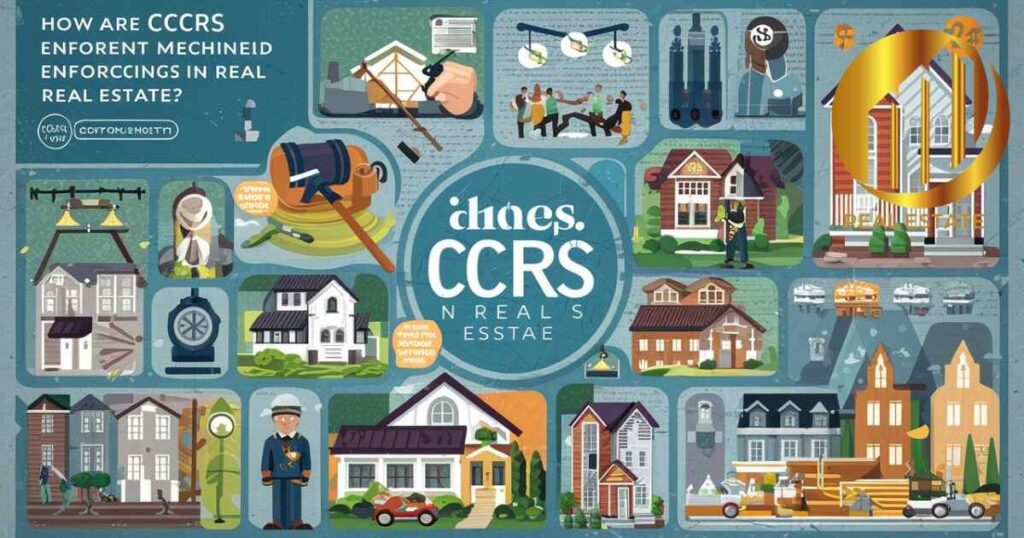
The methods set forth by homeowner’s associations (HOAs) or neighborhood associations are usually used to enforce real estate CCRs. Enforcement of them is commenced upon property owners’ violations and may involve warnings, penalties, or legal action. Early infractions usually result in a warning to the landlord. If the problem persists the landlord may be subject to a fine. If the issue continues to happen the property manager might be dependent upon a fine. If infractions are not helped, the mortgage holder’s affiliation or HOA might record a claim.
Courts step in just when there is a lawfully enforceable understanding between the gatherings. At the point when the severe requirements of the agreements would bring about unjustifiable difficulty property managers might demand exceptions or varieties from the pledges currently set up. Courts step in just when there is a legitimately enforceable understanding between the gatherings. At the point when severe authorization of the contracts would cause excessive difficulty, property managers might demand exceptions or varieties from the pledges currently set up.
What is the Process for Reporting a Violation of CCRs in a Real Estate Development?
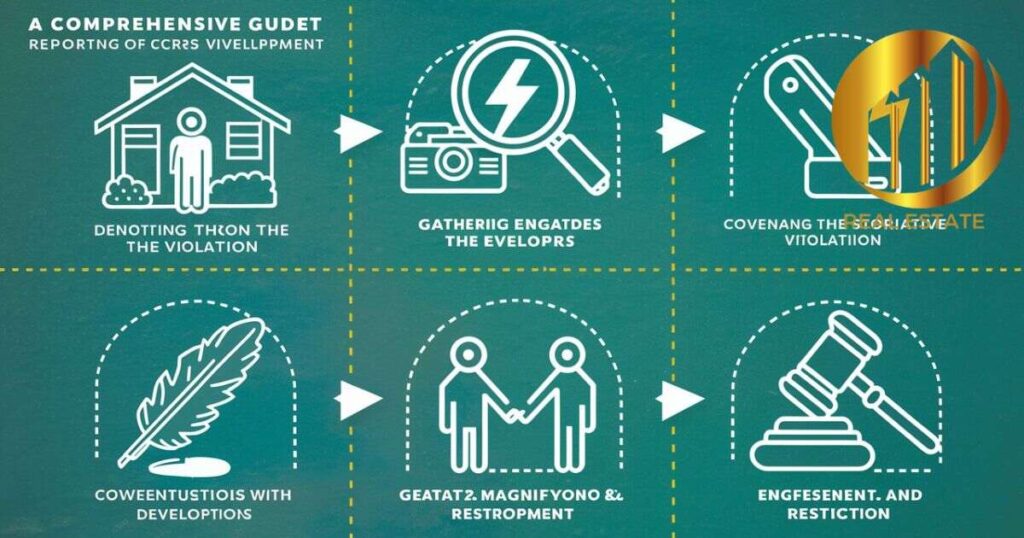
The property holder affiliation (HOA) or the association responsible for maintaining the CCRs inside the local area ought to be reached to report a break of the local area norms in a land improvement. At the point when a property holder or inhabitant sees an infringement, they can record a conventional protest with the HOA, making sense of the particulars of the infraction and including any relevant documentation.
From that point onward, the HOA will investigate the revealed infraction, evaluate its veracity, and make the vital move. It, if important, can include conveying alerts, demanding fines, or beginning legitimate activity. To appropriately address and resolve the revealed infraction, collaboration with the HOA and adherence to the laid out processes given in the CCRs are basic.
Which CCR Types are Regularly Seen in Private Real Estate?
In private land, normal types of CCRs (Agreements, Conditions, and Limitations) include:
Settlement of Fines and Expenses
The circumstances under which property holders should pay expenses for local area conveniences or upkeep might be determined in the CCRs. They may likewise assign punishments for breaking the set rules.
Walls, Outward presentations, and Support
The rules for property care, like those about arranging, outer looks, and the establishment or upkeep of walls, might be determined in these CCRs.
Feelings
A people group’s perspectives might be safeguarded by some CCRs. Which disallows building projects that would darken or in any case adversely influence sees from adjacent properties.
Pets and Commotion
They habitually contain rules about commotion levels, pet possession, and different things that could affect how well occupants of a private local area get along.
In an area or lodging mind-boggling, these normal CCR sorts are fundamental for maintaining local area principles, defending property estimations, and ensuring a tranquil living climate for occupants.
What are the Legal Requirements for Creating CCRs in Real Estate?
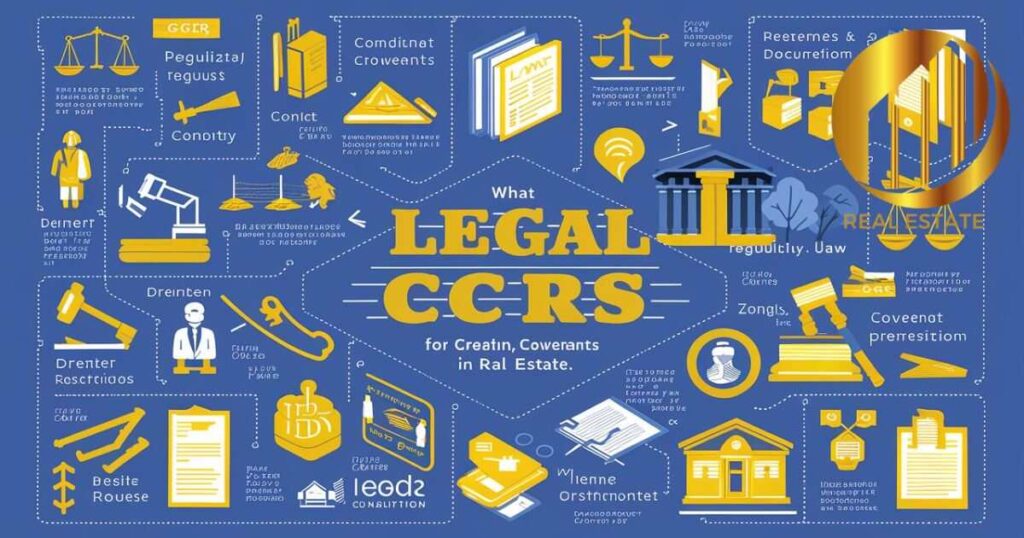
When establishing community covenants and restrictions (CC&Rs) for land, the designer or associated property owner must adhere to appropriate standards. It includes use, consistent state regulations, records, and legal interpretation.
To maintain principles and protect property accountability, these policies govern how property is used, matched, and delimited in the community. CC&Rs can better regulate property ownership, promote a quiet zone, and provide landowners with clarity in specific event changes or neighborhoods on principles and guidelines consistent with specific legal standards.
FAQ’s
What is CCRS?
CCRs are rules governing property use and maintenance in a real estate development.
How do I Find CC&Rs for my Property?
You can find CC&Rs for your property by checking your deed contacting your homeowners association or searching public records online.
Who is Responsible for Creating CCRs in Real Estate Development?
The developer of the real estate development is typically responsible for creating CC&Rs.
How do CCRs Affect Property Value?
CCRs can affect property value positively by maintaining standards or negatively by imposing restrictions perceived as undesirable.
Conclusion
Inside private buildings, a CCR (Contracts, Conditions, and Limitations) fundamentally affects property proprietorship, local area standards, and general personal satisfaction. Landowners are expected to submit to the principles and cutoff points framed in these lawful arrangements. Which are normally made by property holder associations or designers. These guidelines cover different themes, including engineering standards, arranging determinations, and clamor limitations, and that’s only the tip of the iceberg.
Property supervisors can protect property estimations, encourage a sensation of the local area, and attract forthcoming occupants or purchasers by sticking to CCRs. Mortgage holders and buyers should maintain them to save harmony in the area defend property estimations and give an amicable living climate. All gatherings engaged with the proprietorship and improvement of private property should fathom the significance of them in land exchanges and property executives.
